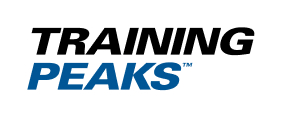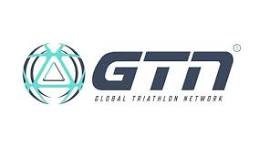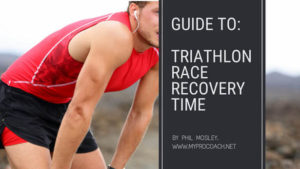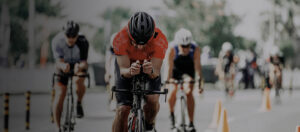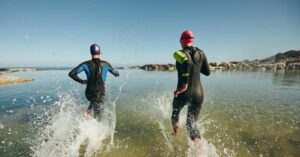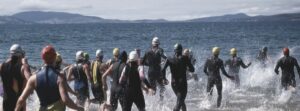Seven essential tips on how to swim freestyle faster…
The surest way to swim faster, especially for beginners, is to sign up for lessons, whether this is at your local public pool, privately or with a swim club. But that won’t suit all. Thankfully, whether you sign up for lessons or not, there’s a helluva lot you can do on your own…
1. Technique Matters
Water has a density of around 1kg per litre. That compares to air, which comes in at around 1.2g per litre, meaning water’s 830 times denser. It’s why swimming is such a technique-heavy activity – any flaw in your skillset is magnified significantly compared to, say, cycling.
That’s why you should include swim drills in every single swim session. They don’t have to take up a huge amount of time but breaking down the stroke into different parts and focusing on them really pays off when you apply them to your whole stroke. Frequency in the water also pays off when it comes to technique (and fitness) rather than just one big session; in other words, three 20-minute sessions are more beneficial than a weekly hour swim set.
2. Consistency Counts
Whether you’re a beginner or experienced, consistency rules with any skill or fitness development and swimming’s no different. In fact, studies into Olympic winners suggest long periods of injury-free training is key to winning gold.
You might not be aiming for the top step of the podium but you are aiming to swim faster. The problem is, you’re not an elite and are balancing life, family, work and swimming. The result? Missed sessions.
That’s why you should learn from six-time Ironman Hawaii winner-cum-coach Dave Scott, who asks his athletes to write down their day’s workout time but also an alternative time in case life intervenes. For example, if the swimmer awakes to screaming children killing their 60-minute 6.30 am swim, if another’s planned later in the day – even if for only 40 minutes – the session would have been rescued.
3. Check The Timetable
This sounds an obvious one but you won’t be swimming faster – or even swimming – if you don’t check the timetable! Depending on your preference, you can try out senior swimming, public swimming, men’s- or women’s-only sessions and lane swimming.
If you have the flexibility, try out a few different times and gauge how busy it is. And remember lane etiquette, which is particularly important during chock-a-block sessions. Always stop at the end of the lane to let faster swimmers pass; choose the lane speed that’s suitable for you; and ensure you’re swimming the right way, be it clockwise or anti-clockwise.
4. Breathe Easy, Swim Fast
From birth, it soon becomes clear that if you don’t breathe, there’s a good chance you won’t be around too long. Thankfully, breathing’s an autonomic process, meaning even before you’ve uttered the words ‘swim faster’, you’re breathing as nature intended. It’s arguably not the same for freestyle. Breathing can be many beginners’ undoing but, with persistence, you can breathe naturally, leaving energy to maximise propulsion and swim better.
One of the key problems is that beginners fail to exhale in the water, so try to inhale and exhale when out of the water, leading to near hyperventilation. So breathe out through your nose underwater. When it comes to inhaling, keep your head in the water but tilt it so that your mouth’s just out of the water. This should be the same side as the arm that’s out of the water.
Keep your chin tucked into your neck, breathe in through your mouth, return to centerline and do the same every two strokes. As time progresses, you can learn to bilateral breathe – breathing both sides – every three strokes.
5. Straight And Fast
A common obstacle to swimming freestyle faster is zig-zag crawling; in other words, swimming left, right, left, right… as you take the long way down the pool lane. That’s where the eyes-closed drill comes in.
During your warm-up, swim a length with your eyes closed. Or if there are lane ropes, swim as far as you can before veering into the ropes. An imbalanced stroke’s often the cause of erratic navigation where, for example, your left arm crosses the midline of your body but your right arm doesn’t, resulting in you heading left.
You can rectify this by imagining a clock and aiming your fingers for 11:30 and 12:30 on the clock. If you continue to cross, aim for 11 and 1 on the clock. You might also need to straighten your elbow slightly. But this will help you swim straight.





